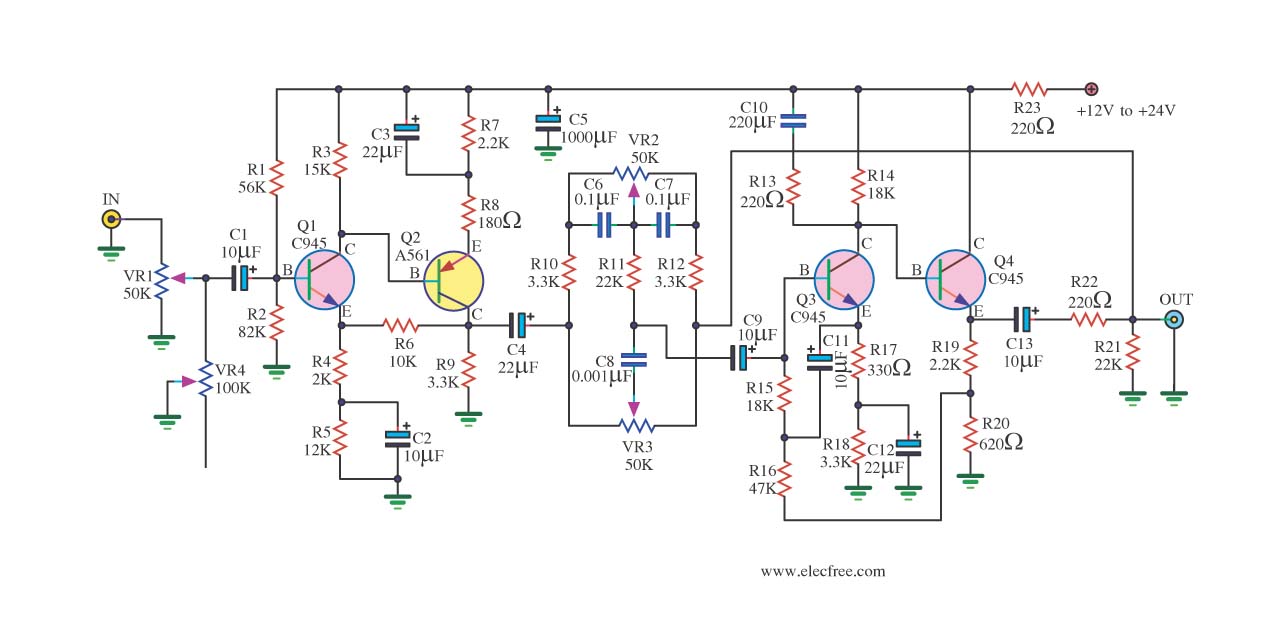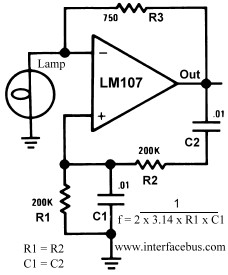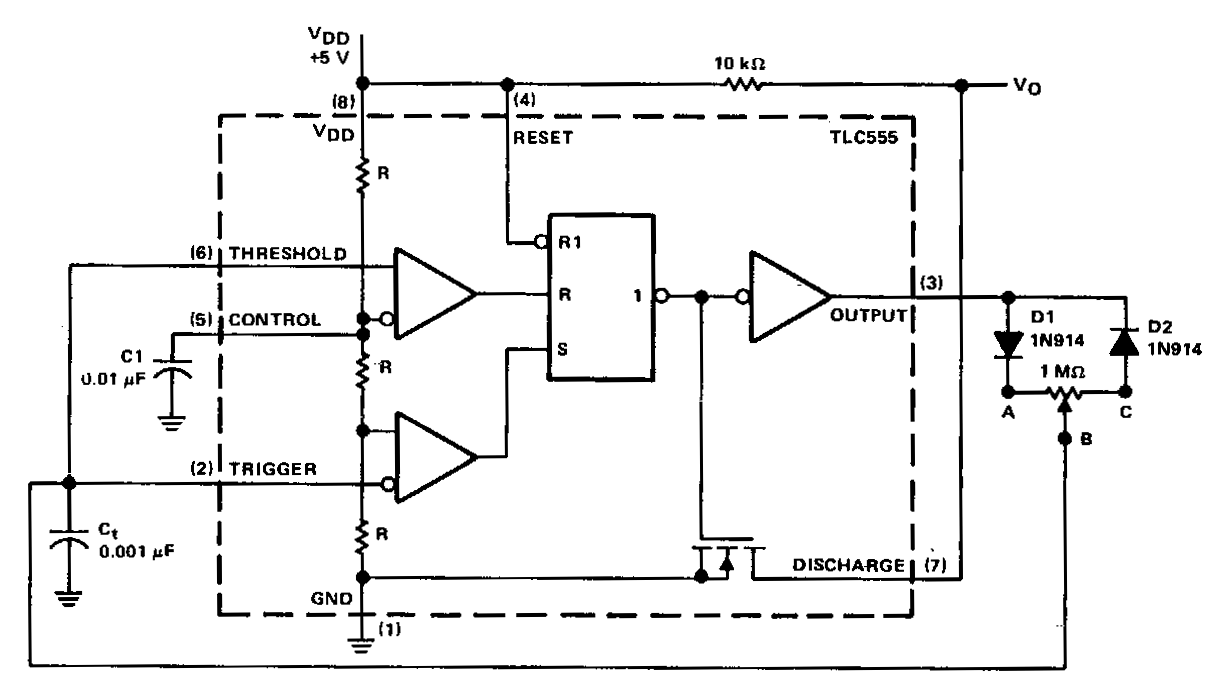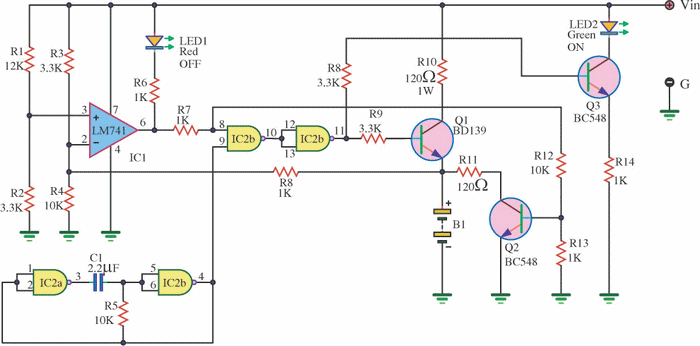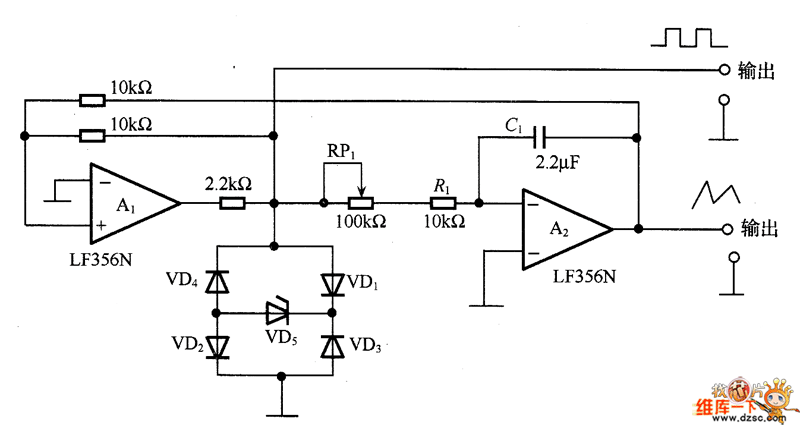
Pierce XTAL Oscillator Using JFET
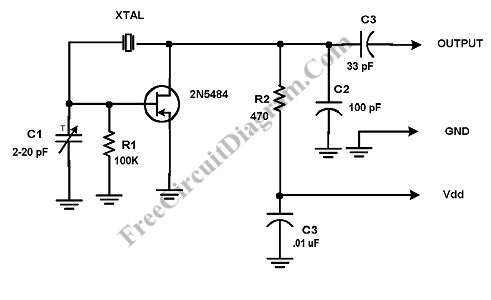
This circuit is a conventional Pierce type oscillator that utilizes a JFET. It employs fundamental mode crystals and demonstrates decent performance and reliability.
The Pierce oscillator is a popular configuration for generating stable oscillations, particularly in applications requiring a stable frequency reference. In this design, the JFET (Junction Field Effect Transistor) serves as the active device, providing high input impedance and low noise characteristics, which are essential for effective oscillation.
The circuit typically consists of a crystal resonator, which determines the oscillation frequency by its physical properties. The fundamental mode crystals used in this configuration ensure that the oscillator operates at the desired frequency with minimal harmonic distortion. The JFET is configured in a feedback loop that allows a portion of the output signal to be fed back to the input, sustaining oscillations.
Key components of the circuit include the JFET, the crystal, and passive elements such as resistors and capacitors that set the gain and phase shift necessary for oscillation. The resistors help in biasing the JFET, while capacitors are used for coupling and filtering purposes.
To enhance performance, proper selection of component values is crucial. The values of the resistors and capacitors are determined based on the characteristics of the JFET and the crystal used, ensuring that the circuit operates within the desired frequency range with adequate amplitude and stability.
Overall, the Pierce type oscillator circuit is valued for its simplicity, effectiveness, and reliability, making it suitable for various applications, including clock generation, frequency synthesis, and signal modulation.This circuit is conventional Pierce type oscillator that uses a JFET. The circuit uses fundamental mode crystals. It has decent performance and reliability if. 🔗 External reference
The Pierce oscillator is a popular configuration for generating stable oscillations, particularly in applications requiring a stable frequency reference. In this design, the JFET (Junction Field Effect Transistor) serves as the active device, providing high input impedance and low noise characteristics, which are essential for effective oscillation.
The circuit typically consists of a crystal resonator, which determines the oscillation frequency by its physical properties. The fundamental mode crystals used in this configuration ensure that the oscillator operates at the desired frequency with minimal harmonic distortion. The JFET is configured in a feedback loop that allows a portion of the output signal to be fed back to the input, sustaining oscillations.
Key components of the circuit include the JFET, the crystal, and passive elements such as resistors and capacitors that set the gain and phase shift necessary for oscillation. The resistors help in biasing the JFET, while capacitors are used for coupling and filtering purposes.
To enhance performance, proper selection of component values is crucial. The values of the resistors and capacitors are determined based on the characteristics of the JFET and the crystal used, ensuring that the circuit operates within the desired frequency range with adequate amplitude and stability.
Overall, the Pierce type oscillator circuit is valued for its simplicity, effectiveness, and reliability, making it suitable for various applications, including clock generation, frequency synthesis, and signal modulation.This circuit is conventional Pierce type oscillator that uses a JFET. The circuit uses fundamental mode crystals. It has decent performance and reliability if. 🔗 External reference
